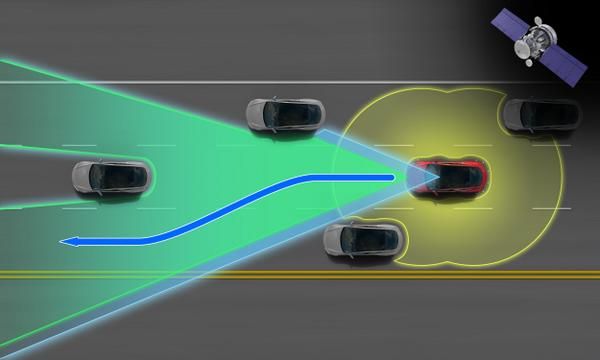Self-Driving Cars! What to Expect Today, Tomorrow, and in the Future
The world of automotive technology is undergoing a significant transformation with the advent of self-driving cars. Autonomous vehicles promise to revolutionize how we travel, enhancing convenience and safety while reducing environmental impact. This article explores what to expect from self-driving cars today, the developments we can anticipate tomorrow, and the long-term implications for the future.

Current State of Self-Driving Technology
Currently, numerous manufacturers are conducting public road tests for self-driving vehicles. Autonomous vehicle technology has been significantly advanced by companies such as Uber, Tesla, and Waymo, which employ sensors, cameras, and artificial intelligence (AI) to navigate and respond to a variety of driving conditions. The automation of these vehicles is classified into various levels, from Level 0 (with no automation) to Level 5 (with full automation). The majority of commercially available vehicles today are classified as Level 2 or Level 3, which means that they can provide assistance to drivers but still necessitate human intervention.
Enhanced Safety Features
One of the most compelling arguments for self-driving cars is their potential to significantly reduce traffic accidents caused by human error, which accounts for over 90% of crashes. Autonomous vehicles utilize advanced algorithms and real-time data to make decisions faster than human drivers can. They are equipped with features such as adaptive cruise control, automatic emergency braking, and lane-keeping assistance, which collectively contribute to safer roadways. As technology evolves, we can expect even more sophisticated safety measures, such as predictive analytics that can anticipate potential accidents before they happen.
Impact on Urban Mobility
Urban mobility is expected to undergo a significant transformation as self-driving vehicles become more prevalent. In densely populated cities, autonomous ride-sharing services may diminish the necessity for personal car ownership. This transition could result in a decrease in traffic congestion, a decrease in parking demands, and a reduction in emissions as a result of the reduced number of vehicles on the road. Additionally, the integration of self-driving technology with public transportation systems has the potential to establish a seamless travel experience, enabling efficient last-mile connectivity.
Regulatory and Legal Challenges
While the potential benefits of self-driving cars are vast, regulatory and legal hurdles must be addressed. Governments worldwide are still determining how to regulate autonomous vehicles effectively. Issues such as liability in the event of an accident, insurance requirements, and the need for standardized safety protocols are all critical factors that need to be resolved. In the coming years, we can expect more legislative frameworks to emerge, ensuring that self-driving cars can operate safely and legally on public roads.

Technological Advancements on the Horizon
The self-driving cars of tomorrow are expected to incorporate technologies that are even more advanced than those that are currently in use. Advancements in sensor technology, machine learning, and AI will enhance the vehicles’ ability to perceive and react to their surroundings. Furthermore, the development of 5G technology will facilitate the transmission of data at a quicker pace, thereby facilitating real-time communication between infrastructure and vehicles. This connectivity will improve the overall traveling experience, optimize routes, and facilitate a smoother traffic flow.
Also Read :- 4 Key Innovations of the Rolls-Royce Silver Shadow (1965-1980)
Environmental Benefits
The rise of self-driving cars also presents an opportunity for environmental sustainability. Autonomous vehicles can be designed to be electric, reducing greenhouse gas emissions associated with traditional gasoline-powered cars. Moreover, as autonomous vehicles can optimize routes and driving patterns, they may lead to increased fuel efficiency. In the future, we may see a shift toward a fleet of shared, electric self-driving cars, contributing to a more sustainable transportation system.
Social Acceptance and Cultural Shift
Societal acceptance is essential for self-driving vehicles to become a ubiquitous mode of transportation. There is still a significant amount of skepticism regarding the safety and reliability of autonomous vehicles. Building trust will necessitate public education campaigns that emphasize the technology’s advantages and provide comprehensive testing data. Furthermore, the acceptance of self-driving cars is anticipated to rise as younger generations become more acclimated to ride-sharing services and grow up with technology, thereby facilitating a cultural shift in our perception of transportation.
Also Read :- The Rolls-Royce Phantom- A Masterpiece of Craftsmanship and Power
Economic Implications
The widespread adoption of self-driving cars will have far-reaching economic implications. On one hand, it could disrupt industries such as insurance, taxi services, and logistics. Traditional car ownership may decline, affecting automotive sales and the aftermarket services industry. On the other hand, new opportunities will emerge in fields such as autonomous vehicle technology development, infrastructure improvements, and shared mobility services. Policymakers will need to consider these economic shifts to support affected industries and capitalize on new job opportunities.
Global Variations in Adoption
The adoption of self-driving vehicles will exhibit substantial variation among various regions and countries. The rate at which autonomous vehicles are adopted will be influenced by factors such as infrastructure, regulatory frameworks, and cultural attitudes toward technology. For instance, countries that have well-developed infrastructure and supportive regulations may experience a more rapid integration of self-driving cars into their transportation systems. In contrast, regions that have made less of an investment in technology and infrastructure may experience a delayed rate of adoption. It will be imperative for manufacturers and policymakers to comprehend these global dynamics in order to prepare for the future.
The Future of Human Interaction with Vehicles
As self-driving technology matures, the nature of human interaction with vehicles will also evolve. While some individuals may prefer fully autonomous driving, others may still want the option to take control. The development of semi-autonomous systems that allow for a seamless transition between human and machine control could cater to varying preferences. Moreover, as cars become more integrated with our daily lives, features such as personalized interfaces, in-car entertainment, and enhanced connectivity will redefine our relationship with vehicles.
Conclusion
The automobile industry is about to undergo a radical change because to self-driving vehicles, which offer improved sustainability, efficiency, and safety. Even as technology develops, societal acceptance and legal obstacles will continue to be important determinants of its destiny. It is certain that autonomous vehicles will have a significant impact on urban mobility, the economy, and our connection with transportation in addition to changing the way we travel.




